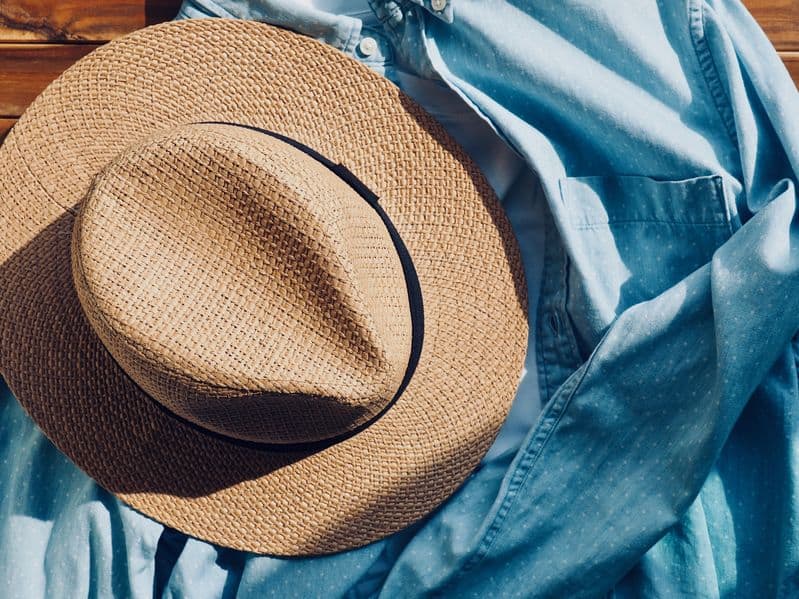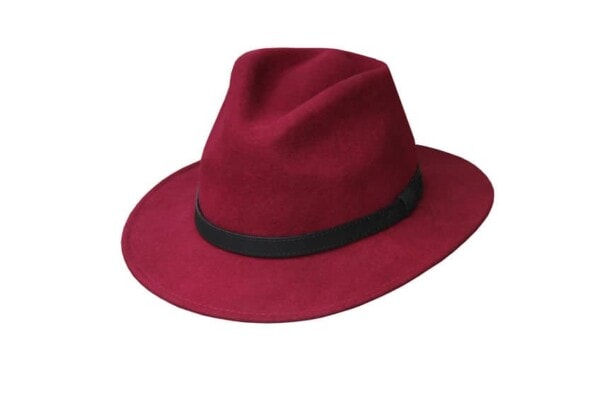It is important to protect yourself from harmful UV rays on hot summer days. There are a number of different measures that can be taken in order to keep yourself safe.
One of the most popular and fashionable ways to protect yourself from the sun is by wearing a straw hat.
Straw hats are good protection from the sun, as the straw creates a protective layer between the sun and your skin.

However, it is important to wear sunscreen as an extra layer of protection since many straw hats have spaces between the material that let sunlight through.
Some straw hats with a fine weave do come with very good UPF protection.
This article will evaluate just how effective straw hats are at protecting your face from harsh direct sunlight and the materials used to make straw hats. Let’s get started!
When Was the Straw Hat Created?
In parts of Asia and Europe during the Middle Ages, the demand for a shield between the skin and sunshine during the summer months quickly grew.
The straw hat was created to combat this issue while providing cool air to the head.
Some of the first evidence of straw hats in use comes from paintings and fragments from Ancient Egypt. They were discovered in a non-elite burial site indicating that these hats might have been worn by everyday people.
What Are Straw Hats Used For?
Straw hats were initially created to protect the wearer’s eyes and face from the sun, but now, it is often worn simply as a fashion statement. This hat style is unique in that it has remained popular among all social classes throughout history.
What Materials Are Used To Make Straw Hats?
Today several materials are used to create straw hats, such as:
- Wheat and rye straw: Wheat straw is one of the most commonly used materials in crafting straw hats. As the name suggests, wheat straw is derived from dried material from the wheat plant.
- Toquilla straw: Used to make panama hats this traditional method and material are still used today to create the finest straw hats.
- Braided hemp: The hemp plant is an excellent source of material for making straw hats. Dried strands of the hemp plant are braided together to form a tightly bound material that will be used to construct a straw hat.
- Synthetic straw: Synthetic straw is a type of plastic material replicating real straw. It appears and behaves the same way that real straw behaves when shaped into a straw hat. For those reasons, synthetic straw is a strong alternative to using real straw to craft hats.
Check out this super popular panama hat from Pineapple&Star on Amazon with a UPF protection of 50.

How Are Straw Hats Made?
While there are several variations of the straw hat, all straw hats share the fact that they are crafted from some plant fiber. Felt hats are formed similarly to that straw hats.
Steaming or submersion into hot water is used to soften the hat before it is shaped over a hat block. Due to the time required to weave a large straw hat by hat, prices are much higher for large straw hats.
In What Countries Are Straw Hats Most Popular?
Where can you find straw hats besides in the United States? Here are four countries where straw hats are the most popular:
- Ukraine: In Ukraine, the straw hat is just one example of the many traditional accessories that are still popular today, as the traditional Ukrainian straw hat is similar in shape to the boater hat. Rye straw is often used to craft straw hats in Ukraine.
- Japan: Japan is just one of the many Southeastern Asian countries where the straw hat is very popular. The conical hat is typically worn as part of Buddhist monks’ traditional dress in many parts of Japan.
- Ecuador: In Ecuador, toquilla straw is often used to craft straw hats, which is the source of a durable and flexible material that is the primary material in creating the Panama hat.
- Philippines: The buntal hat is a very popular traditional hat in the Philippines. Much like the straw hat, it is woven from fibers extracted from plants and worn in formal and informal situations.
Conclusion
While the straw hat is an excellent summertime fashion statement and a cooling option, it is not the most effective source of protection from the sun.
Most straw hats have numerous small spaces between the material, allowing sunlight to shine. If you plan to wear a straw hat in the sun for a lengthy time, apply a layer of sunscreen as extra protection.
There are several ways to protect yourself from the harmful effects of UV rays. Many different types of straw hats are rated on a scale to determine how effective each hat will be at protecting you from the sun
Read more intriguing facts about straw hats in this article.
Read more about the pros and cons of straw hats in this article.













